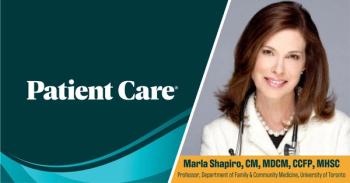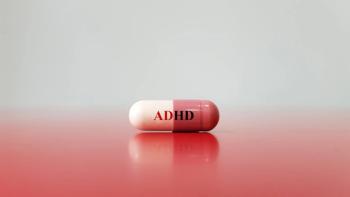
Stress Testing 101
Among many considerations when ordering or interpreting a stress test are the limitations and adequacy of the stress modality (exercise, vasodilator, ionotrope) as well as the imaging modality used. Here, top-line reminders for primary care practice.
With the surge of noninvasive stress assessment modalities available in cardiology, the number of diagnostic tests available for evaluating patients with known or suspected coronary artery disease (CAD) is rapidly growing. For the primary care physician, a firm understanding of the indications for, limitations of, and clinical implications of each modality is important for accurate interpretation.
Ordering Stress Tests
When ordering or interpreting a stress test, the limitations and adequacy of the stress modality (exercise, vasodilator, ionotrope) as well as the imaging modality (electrocardiography, echocardiography, PET, MIBI) must be considered. Each of these has limited sensitivity and specificity, and the rate of false positives/false negatives is highly dependent on the appropriateness of the test and clinical indications. For example, the rate of false-positive results can be high in a patient with very low pre-test probability of coronary disease; similarly a very high-risk patient may not need diagnostic noninvasive testing and may benefit from coronary angiography. Ideally, therefore, patients referred for noninvasive stress testing are at intermediate risk.
Stress testing should never be performed during ongoing chest pain or when there is suspicion for an acute coronary syndrome, such as unstable angina or non–ST-elevation myocardial infarction. Once the acute condition has resolved and has been medically managed, stress testing can be used to assess burden of disease.
Choosing a Stress Modality
An exercise stress test is usually preferred whenever possible because it provides information on the patient’s functional capacity as well as on hemodynamic parameters during exercise, such as blood pressure and heart rate, although there may be rare exceptions (ie, localization of ischemic territory). For patients who are unable to exercise, alternative modalities can be chosen, such as pharmacologic stress testing.
The ionotrope dobutamine is appropriate for patients who have no obvious contraindications. Common contraindications include tachyarrhythmias (ie, poorly controlled atrial fibrillation [AF] or a history of AF with rapid ventricular rate) or recent ventricular tachycardia. Dobutamine is also a preferred choice in patients with bronchospastic airway disease who cannot tolerate adenosine.
Adenosine or persantine are possible vasodilator stress modalities. These are contraindicated in patients with severe bronchospastic or obstructive airway disease or history of heart block without a pacemaker. The newer agent regadenoson induces less bronchospasm and is an acceptable alternative, although it remains quite expensive. Vasodilator testing, which is based on coronary steal, can be less sensitive in detecting triple-vessel coronary disease, in which “balanced” ischemia can result in a false-negative result.
Choosing an Imaging Modality
After deciding on the stress modality, an imaging modality must be chosen to determine the perfusion abnormalities. Choices include electrocardiography, echocardiography, rubidium PET, MRI, and radionuclide myocardial perfusion imaging. When electrocardiography is used, it is important to ensure there are no abnormalities on the baseline ECG (ie, left bundle-branch block, digoxin effect, pre-excitation, left ventricular hypertrophy, or >1 mm ST depressions at rest) that could affect the interpretation of ischemic changes. Echocardiography can provide helpful information about inducible wall motion abnormalities and valvular function with exercise. However, it must be interpreted by an experienced echocardiographer at high-volume centers in order to maintain its specificity. PET, MRI, or sestamibi imaging are also alternatives that can be ordered in consultation with a cardiologist after considering additional factors, such as cost, need for hemodynamic assessment, and body habitus.
Preparing for and Interpreting a Stress Test
Depending on the indication for a stress test (eg, diagnosis of CAD, risk stratification, functional capacity assessment), it is often appropriate to have the patient hold beta-blockers or non-dihydropridine calcium channel blockers for at least 12 to 24 hours (a minimim of 3 half-lives) in order to achieve the maximum target heart rate. However, if the indication is to assess the burden of disease and/or functional capacity of a patient with established CAD on maximal medical therapy who is being evaluated for new symptoms, these agents do not necessarily need to be interrupted.
Assessing the adequacy of an exercise stress test is critical to its diagnostic accuracy. If an individual is unable to achieve his or her 85% maximum predicted heart rate and no evidence of ischemia is demonstrated on the ECG or other imaging modality, this test is considered submaximal and is therefore nondiagnostic. It should not be misinterpreted as a negative result and treatment decisions should not be made without additional diagnostic testing.
Recommended Resources
• Gibbons RJ, Balady GJ, Bricker JT, et al. ACC/AHA 2002 guideline update for exercise testing: summary article. A report of the American College of Cardiology/American Heart Association Task Force on Practice Guidelines (Committee to Update the 1997 Exercise Testing Guidelines).
• Hendel RC, Berman DS, Di Carli MF, et al. ACCF/ASNC/ACR/AHA/ASE/SCCT/SCMR/SNM 2009 Appropriate Use Criteria for Cardiac Radionuclide Imaging: A Report of the American College of Cardiology Foundation Appropriate Use Criteria Task Force, the American Society of Nuclear Cardiology, the American College of Radiology, the American Heart Association, the American Society of Echocardiography, the Society of Cardiovascular Computed Tomography, the Society for Cardiovascular Magnetic Resonance, and the Society of Nuclear Medicine.
Newsletter
Enhance your clinical practice with the Patient Care newsletter, offering the latest evidence-based guidelines, diagnostic insights, and treatment strategies for primary care physicians.

































































































































































































































































































